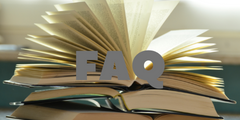Module B- Critical Reading of Texts
Q: The best texts are those that try to make the most of their existence.
Yeats’s poetry has a powerful ability to communicate universal concepts, making it relevant even today. He is able to use his artistic talent to weave together his ideas, philosophies, and context issues. This allows us to gain a deeper understanding of life and expand our perspectives. It is affirmative to say that texts like “Wild Swans at Coole”, “Among School Children”, and others, take pain and attempt to make it meaningful. These texts both examine the transcendental contradictions between life’s purpose and the decline in physical and spirit aging.
In “Wild Swans at Coole”, Yates’ intense concern with aging comes through clearly. Yeats’s mature reflection on time was not melodramatic or mature. He was an older man who had a “sore heart” at the time. The poem conveys a sense of sadness and loss, and is centered around Yeats’ favourite image: the swan. The swans are transformed into symbols of inspiration and feeling by Yeats. This is evident in the poem. The transience and inevitable death of human beings is what Yeats means. He refuses to become a prisoner and “rejects” life’s cycle. Yeats is left feeling vulnerable when he realises how nature and swans can be uncontrollable. The swans appear to be eternally young, which makes it difficult to distinguish them, while aging in humans is obvious. “All’s altered since I first heard the twilight at this shore”, when I “trode lighter” refers Yeats’s childhood and his desperate yearning to get back there. Stanza 1 is full of constant references to time. The words “autumn”,”October” and”twilight”, all of which are used by the poet, imply the approaching of death and decay. These words have in common the sense of approaching the end. They emphasize the idea that time is passing. Yeat is a man who has never experienced love, and this makes his ageing more harsh. On the other hand, the swans in the poem are lovers, accentuating the challenge of growing elderly.
In Among the School Children, Yeats continues to struggle with age and transcendence. By being among children at school, Yeats confronts humanity’s frailty as he reflects on what his life has meant. He initially wears a mask of reconciliation and acceptance, but he is internally agonized by his fear of the inevitable. When he compares Maud Gonne in her current age to how she looked when young, he begins to realize the impact of time. Yeats, having finally understood the mortality of human beings, searches for every possible way to avoid his inevitable death. He describes his relationship with Maud, and how they are like an egg. They feel as though they belong together. The poet continues by describing how great people like Aristotle or Pythagoras, who achieved many things in their lives but were still victims of transcendence. Yeats challenges pain through an in-depth examination.
Yeats uses the swan as a focal point. It can be used to represent the artist’s confidence, solitude before death, unsatisfied desires, or even wildness. But it is primarily used to express the union of perfect beauty with divine strength, passion and conquest. Yeats, besides using the swan to represent youth, seems to have observed the constant pattern that is used in their art, which preserves youthfulness on the “artifaces for eternity”. He expresses his work as a piece that is meant to preserve and capture the moment. In this case, it is the moment when reminiscing about the enticing sight of the imperial Swans. Art can also provide individuals with a sense comfort and assurance. The poet accepts the inevitable fact of death, as do all other people. He uses art in order to be remembered.
The song Among School Children, however, is a reflection of the intense concern that the author has for the process and dangers of aging. It deals with both the physical and spiritual aspects of the process. In the fourth verse, he refers to aging by using an image of a man aged as a “scarecrow”. Yeats was convinced he represented a hollow scarecrow. His discontentment could be hidden by a mask he presented to children. The poet then recalls the time when Maud Gonne was not ugly and makes reference to art, philosophy, culture and other things. The poet speculates the human relations he’s seen and remembers: Nuns, worship, lovers, mother and child. All of these have a tendency to idealise. Vendler, an acclaimed critic, says that idols are always disappointing and mocking our efforts. She states that “Life consists of a series of endlessly pleasing inventions” and the poem acknowledges this truth without completely destroying the continuity. Yeats’s poem uses animalistic images, but here he focuses more on the beings that have overcome the challenges in human existence.
Yeats is the author of this philosophical poem that can be enjoyed by everyone. Through the art form that is available to everyone, Yeats depicts life’s losses as they are displayed through the ageing process and the concepts of reflection.


